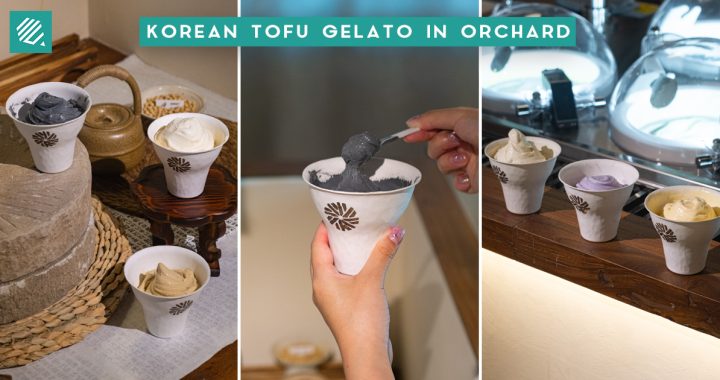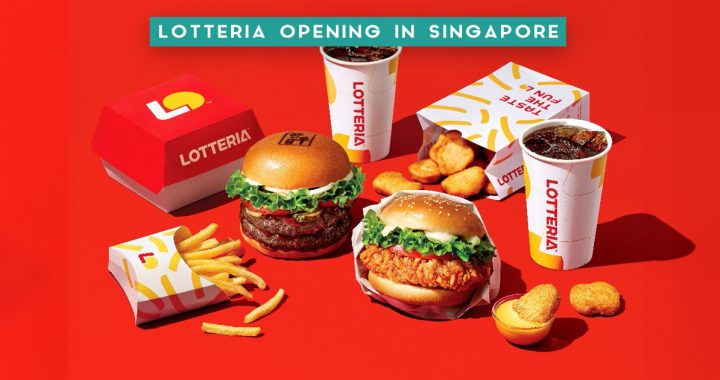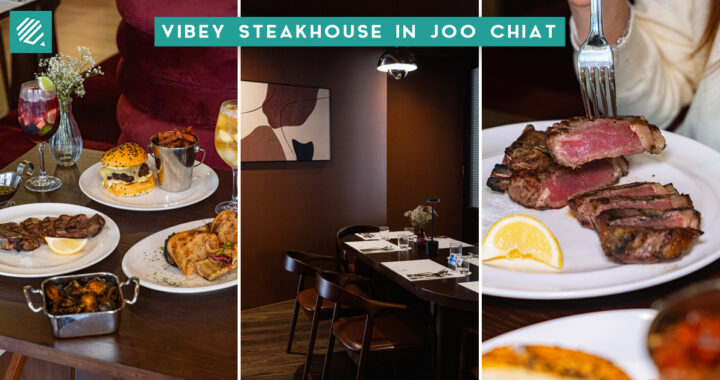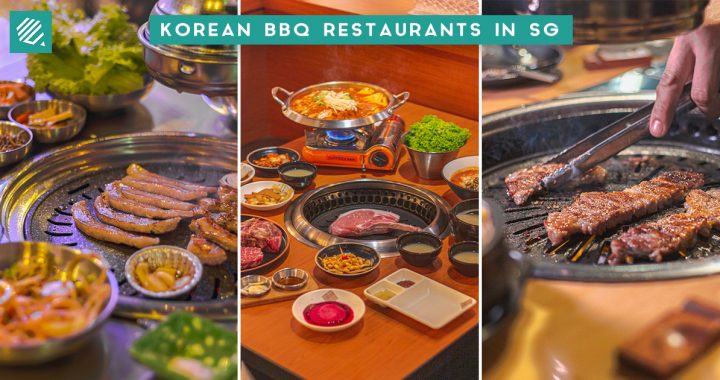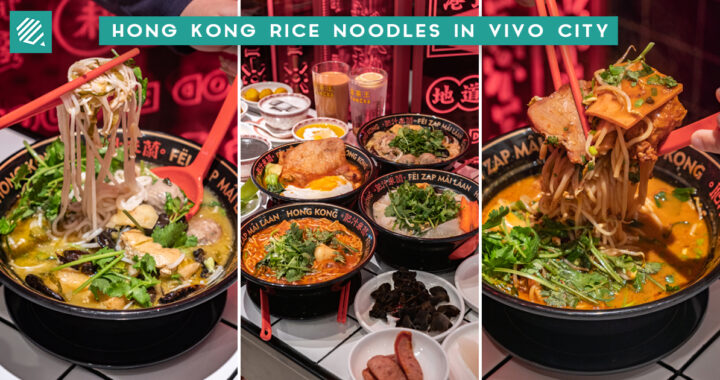Korea is undoubtedly a food paradise. A few things that come to mind is the sizzling sound of samgyeopsal being grilled and warm, comforting bowls of jjigaes. But let’s put that aside for now because we’ll be introducing a couple of Korean traditional snacks that you should try when in Korea. Good news, some can even be found right here in Singapore!
Korean Traditional Snacks You Should Check Out
Songpyeon
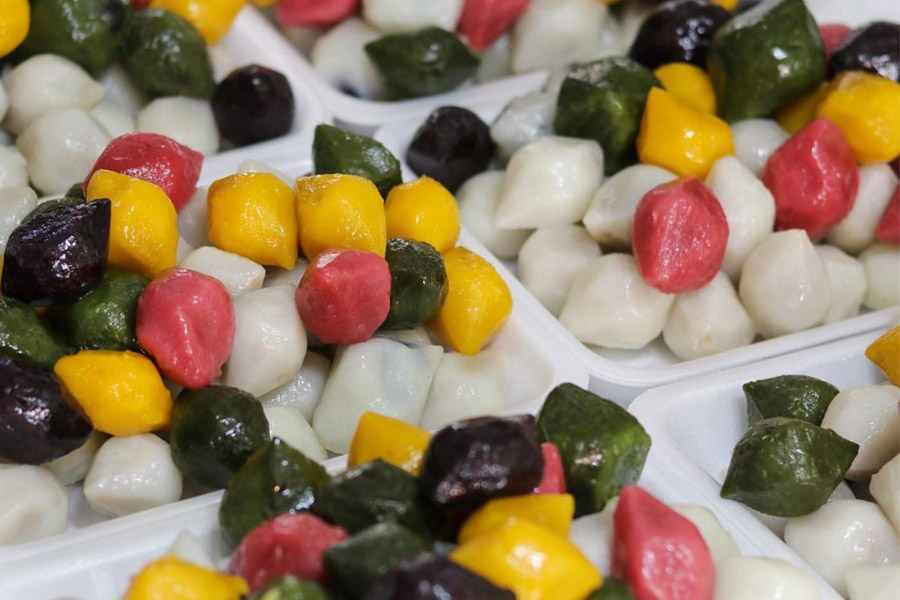
Commonly eaten during Chuseok, Songpyeon is undoubtedly one of Korea’s most well-known traditional snacks.
They usually contain sweet fillings such as sesame seeds or honey, and then steamed over a layer of pine needles.
You can easily get this in various Korean marts in Singapore nearing Chuseok celebrations that usually happen in September, depending on the lunar calendar. In Korea, the traditional markets, such as Gwangjang Market usually sell Songpyeon during Chuseok season.
Yakgwa
Another snack you can easily get in Singapore without travelling to Korea is Yakgwa. These deep-fried snacks are usually made using honey, wheat flour and other ingredients.
A good Yakgwa is neither too sweet nor too oily, which can be a challenge to find. Korean marts in Singapore do carry this snack, which we tried in one of our MiddleClass Tries episodes, along with other traditional snacks!
Gukhwa-ppang
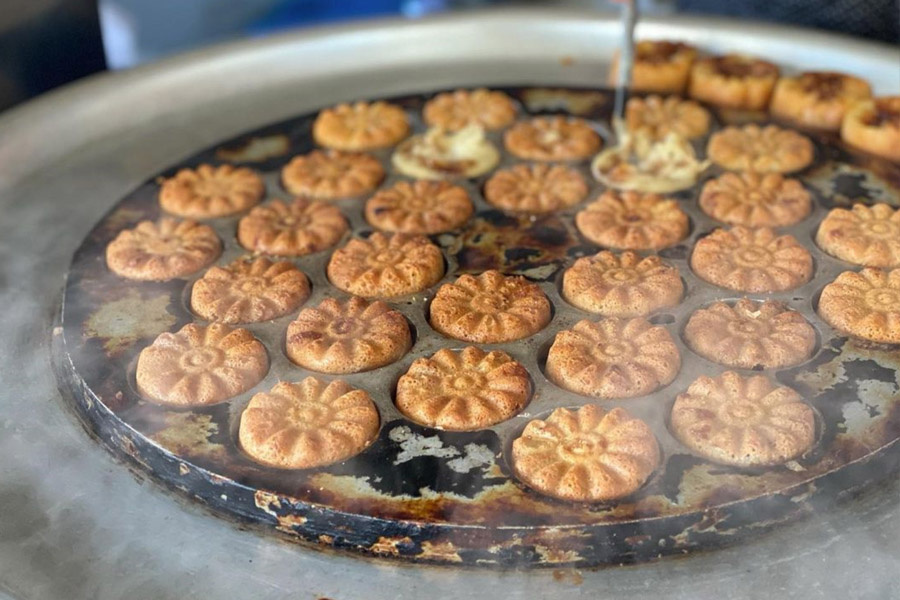
Gukhwa-ppang, which literally translates to chrysanthemum bread, is a great alternative to your usual Bunggeo-ppang. The flower-shaped pastry usually contains red bean paste, but if you’re lucky, you might find more modern renditions such as peanut or honey along the streets of Korea.
Gyeongdan

Gyeongdan is a type of rice cake that’s covered in various toppings such as roasted soybean powder, black sesame and mugwort. Sometimes, they include a red bean filling as well.
These rice cake balls can be found in Korean traditional markets.
Ppeongtwigi
“Ppeongyiyo!” Something you’ll hear whenever someone is about to make some Korean puffed grains. Usually, rice is placed into a grain popping machine and the rice ‘pops’ due to high heat/pressure.
The snack is pretty bland but comes with a tinge of sweetness, making it a popular snack among toddlers.
Hangwa
Alongside tteok, aka rice cakes, Hangwa forms the sweet food category in Korean cuisine. These traditional Korean confectionaries can usually be found in traditional tea houses as a side or even as a menu item.
Dasik
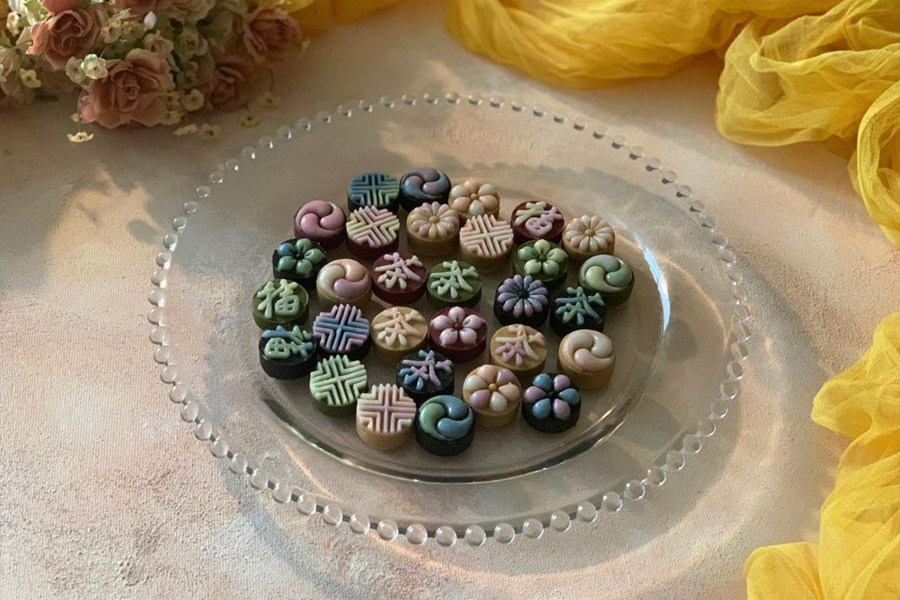
Usually served alongside tea, Dasik is a bite-size confectionery that comes in various patterns and colours. It is made by kneading grain or edible seeds with honey.
Some flavours include:
- Kkae dasik (made using toasted sesame seed powder)
- Songhwa dasik (made using pine pollen)
- Bam dasik (made using chestnuts)
Jeong-gwa
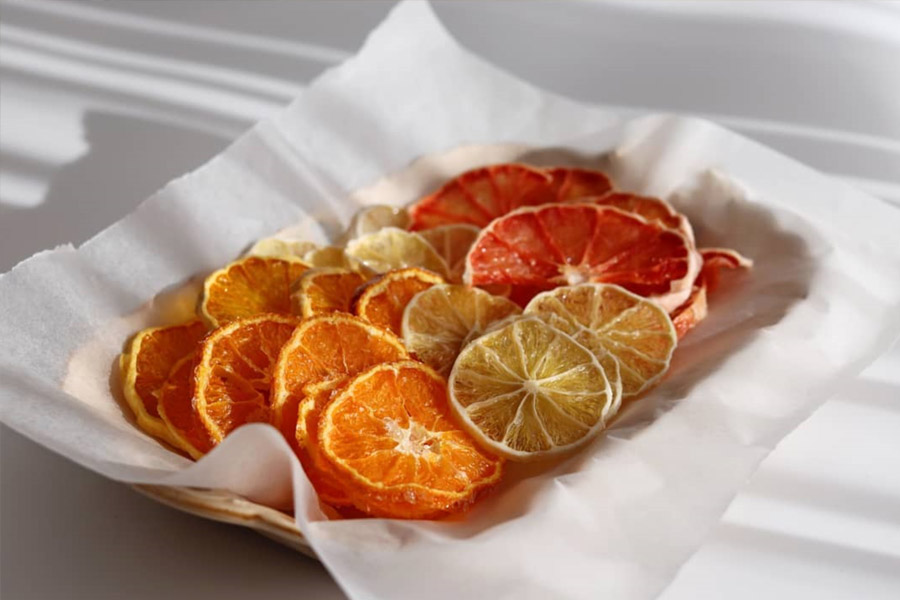
Similar to candied fruit, Jeonggwa is made by boiling fruits or roots in honey or rice syrup. The slices are then dried and can be further made into pretty decorative shapes.
Gwa-pyeon
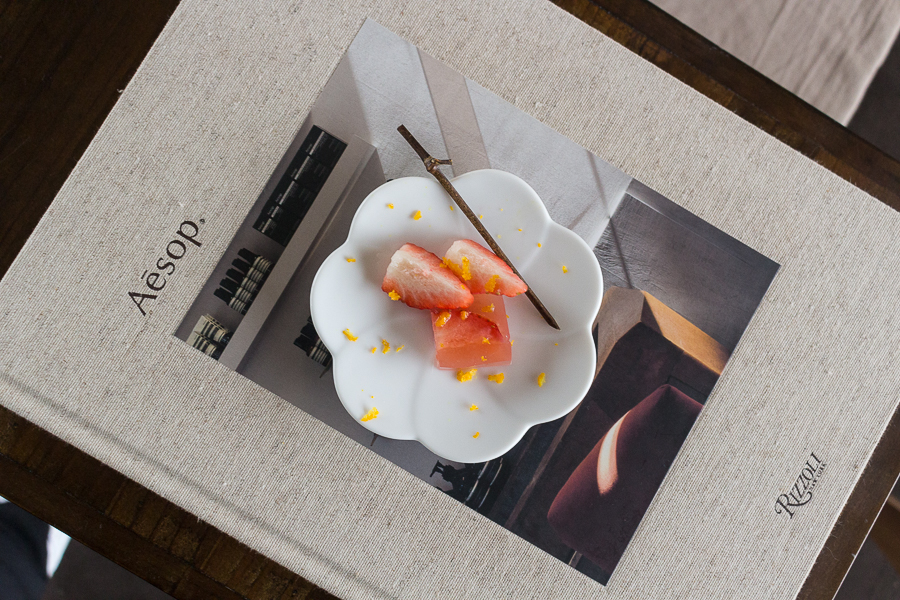
Almost like an upgraded version of agar-agar, Gwapyeon is usually made with fruits or berries. During winter, you can even find seasonal Gwapyeon like this Strawberry one served at The Eerang Tea Lounge in Hongdae.
Yumil-gwa
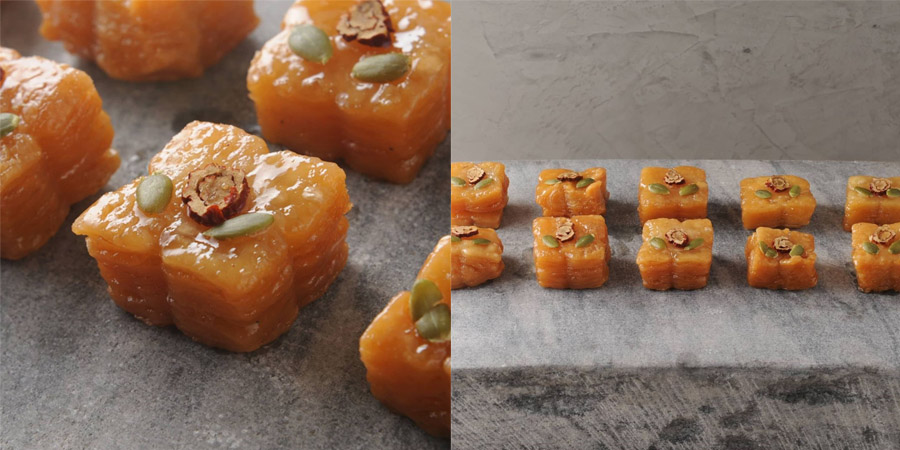
Yumilgwa is a category of deep-fried confectionaries made using wheat flour dough and honey, alongside other ingredients such as cinnamon powder, nuts and ginger juice.
Yakgwa is part of the Yumil-gwa family but there are others as well, coming in different shapes such as a ribbon (maejap-gwa)or even a dumpling (mandu-gwa).
Gangjeong

Essentially a rice puff snack, Gangjeong can come in different colours and flavours and are usually hollow on the inside.
There’s also Yeot-Gangjeong, which is basically rice puffs mixed with sweet syrup and then moulded into bars or squares. Yeot-Gangjeong can also contain nuts and dried fruit and are easily found in Korean traditional markets.
Suksil-gwa
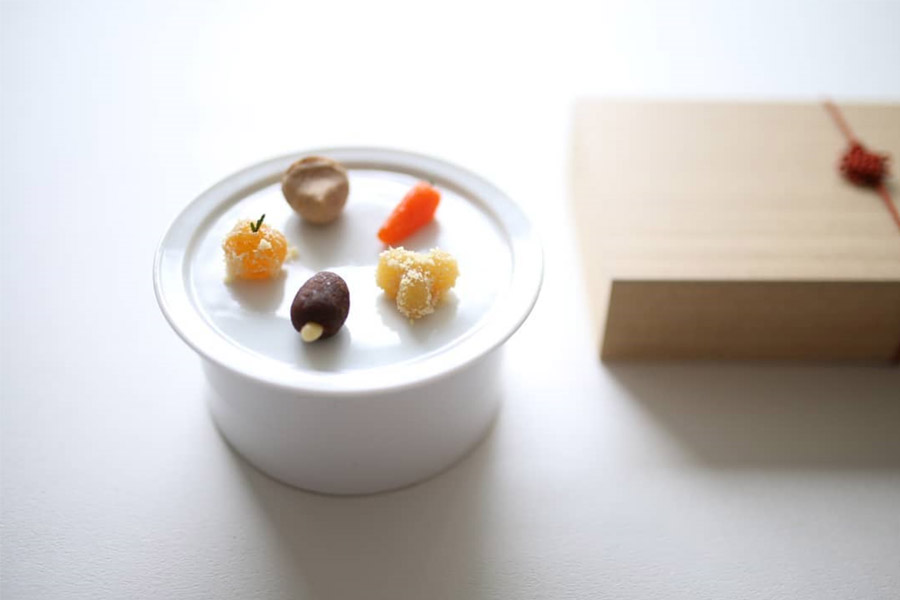
Not to be confused with Jeonggwa, Suksil-gwa is also made by cooking fruits, roots or seeds with honey. However, there are 2 methods to making Suksil-gwa.
The first method is called ran (卵), which involves the meshing of the original cooked ingredient, mixing it with honey and then shaping it to look like a fruit. The other method is cho (炒), which doesn’t involve meshing, so the final product looks exactly like the original fruit.
Common fruits/roots used are chestnut, jujube and ginger.
Yaksik
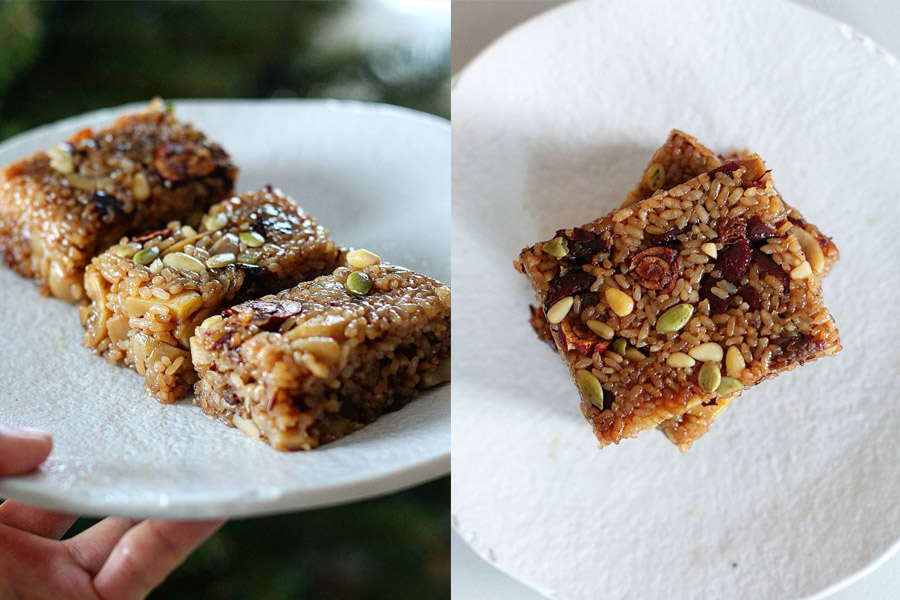
A sweet Korean snack with a glutinous rice base and toppings such as chestnuts, pine nuts and jujube. It has a brownish colour due to the usage of brown sugar, soy sauce and sesame oil, so you can expect a sweet-salty combination.
Yaksik is commonly eaten during the first full moon of the Lunar New Year, also known as daeboreum.
Kkul-tarae
The Korean version of Dragon’s Beard Candy, known as Kkul-tarae, is made using honey and corn starch. The honey is stretched and pulled into strands, looking almost like vermicelli, then wrapped around a filling such as groundnuts.
This can easily be found along the streets of Insadong, where the vendors usually put up a “show” making Kkul-tarae.
Korean Snack Alternatives
The next time you’re visiting Korea, do keep a lookout for these traditional Korean snacks! They are usually found in traditional markets and tea houses.
If not, you can also try some traditional Korean rice cakes right here in Singapore. Check out our review of Hodunamu, a quaint shop located in Everton Park selling handmade Korean traditional rice cakes.
*Follow MiddleClass.sg on Facebook, Instagram and Telegram for more food, travel and trending stories!


